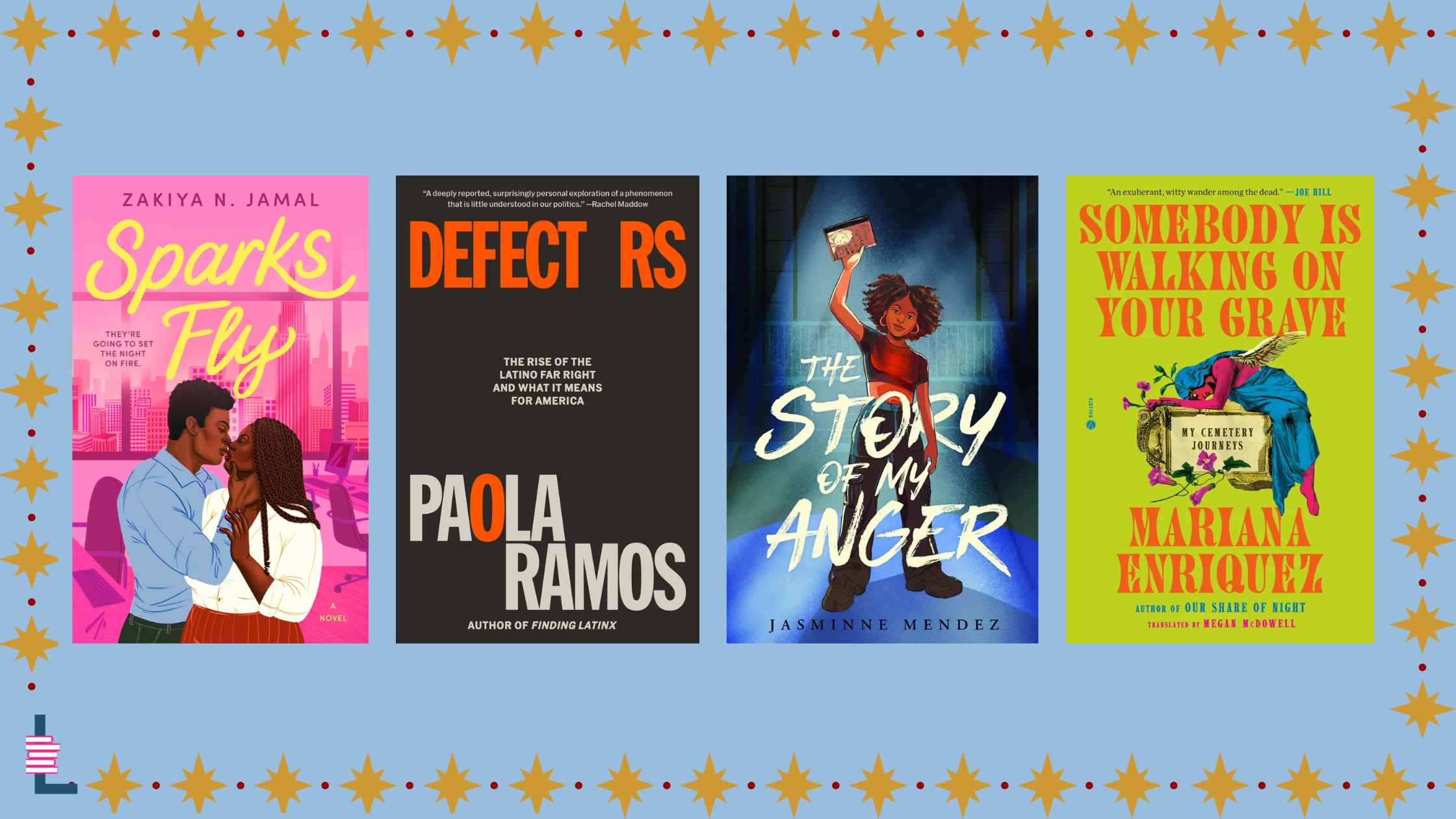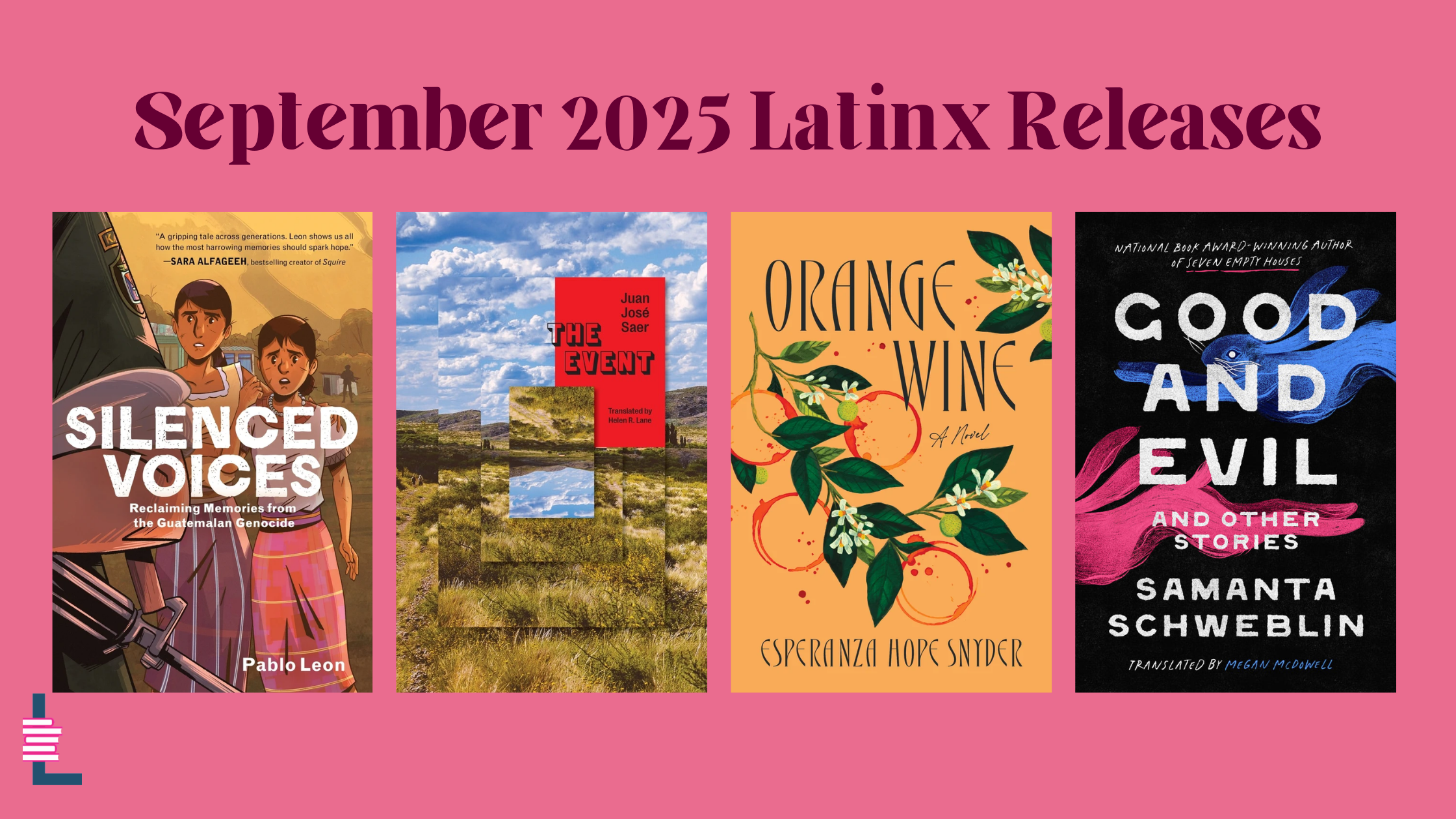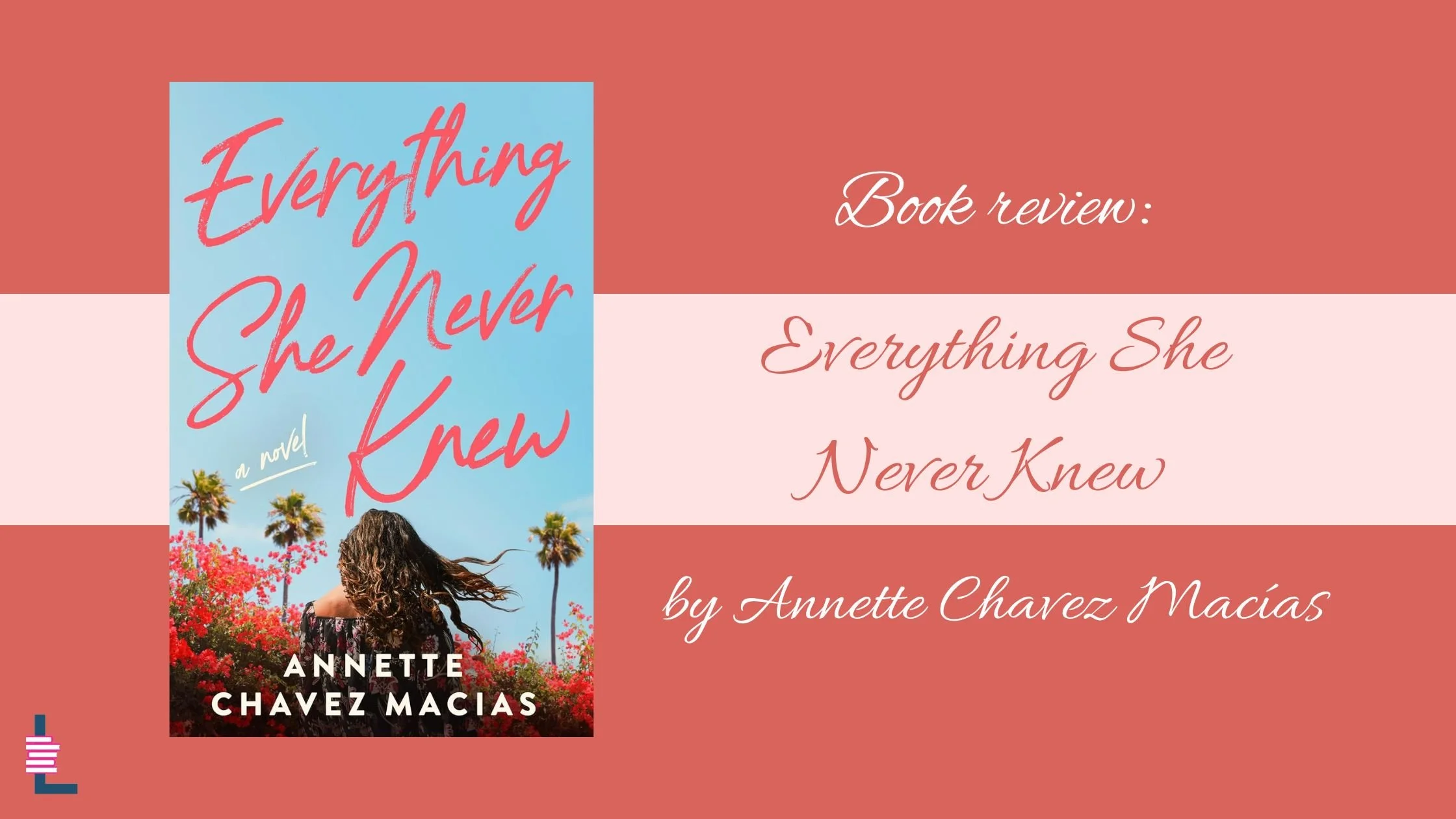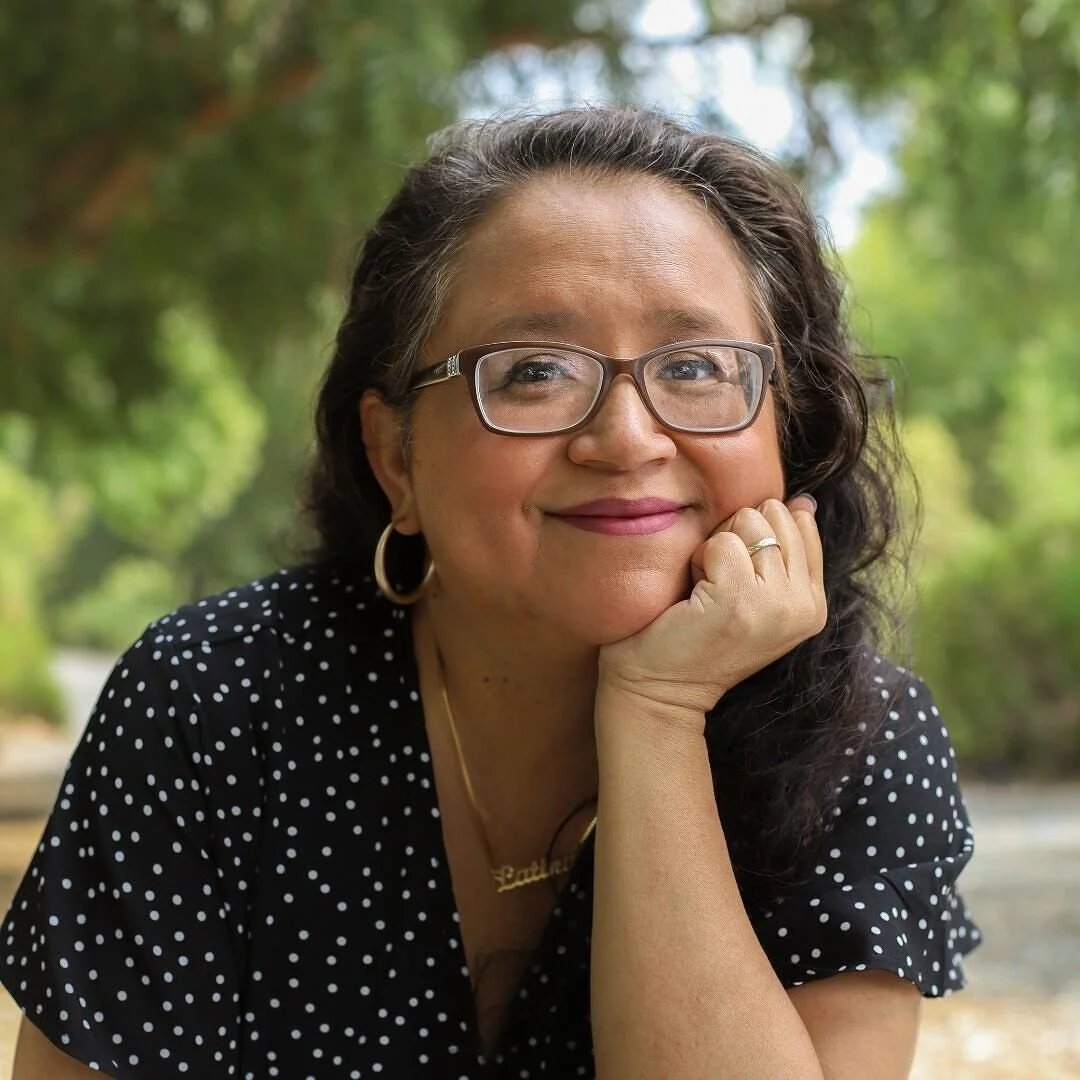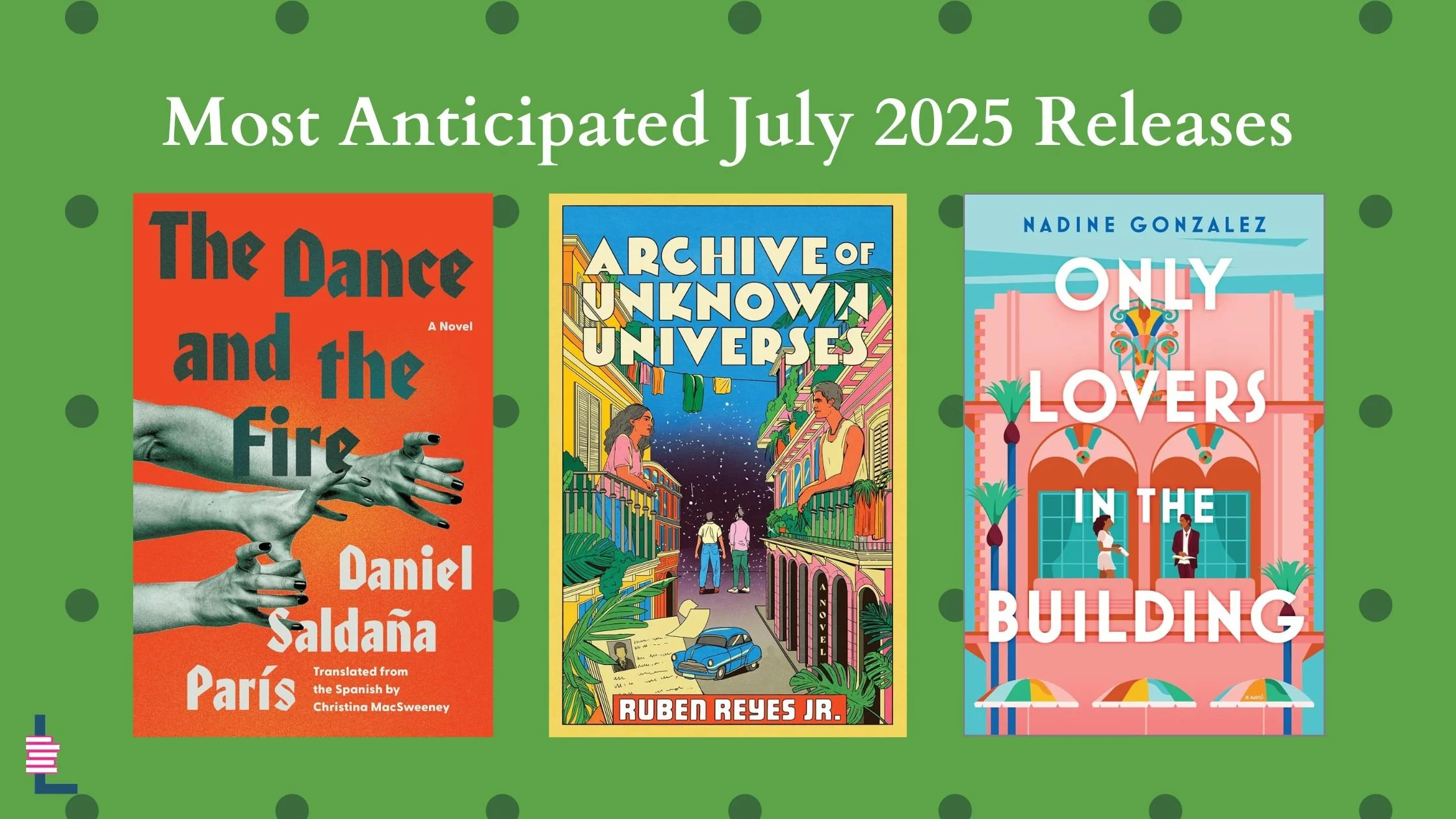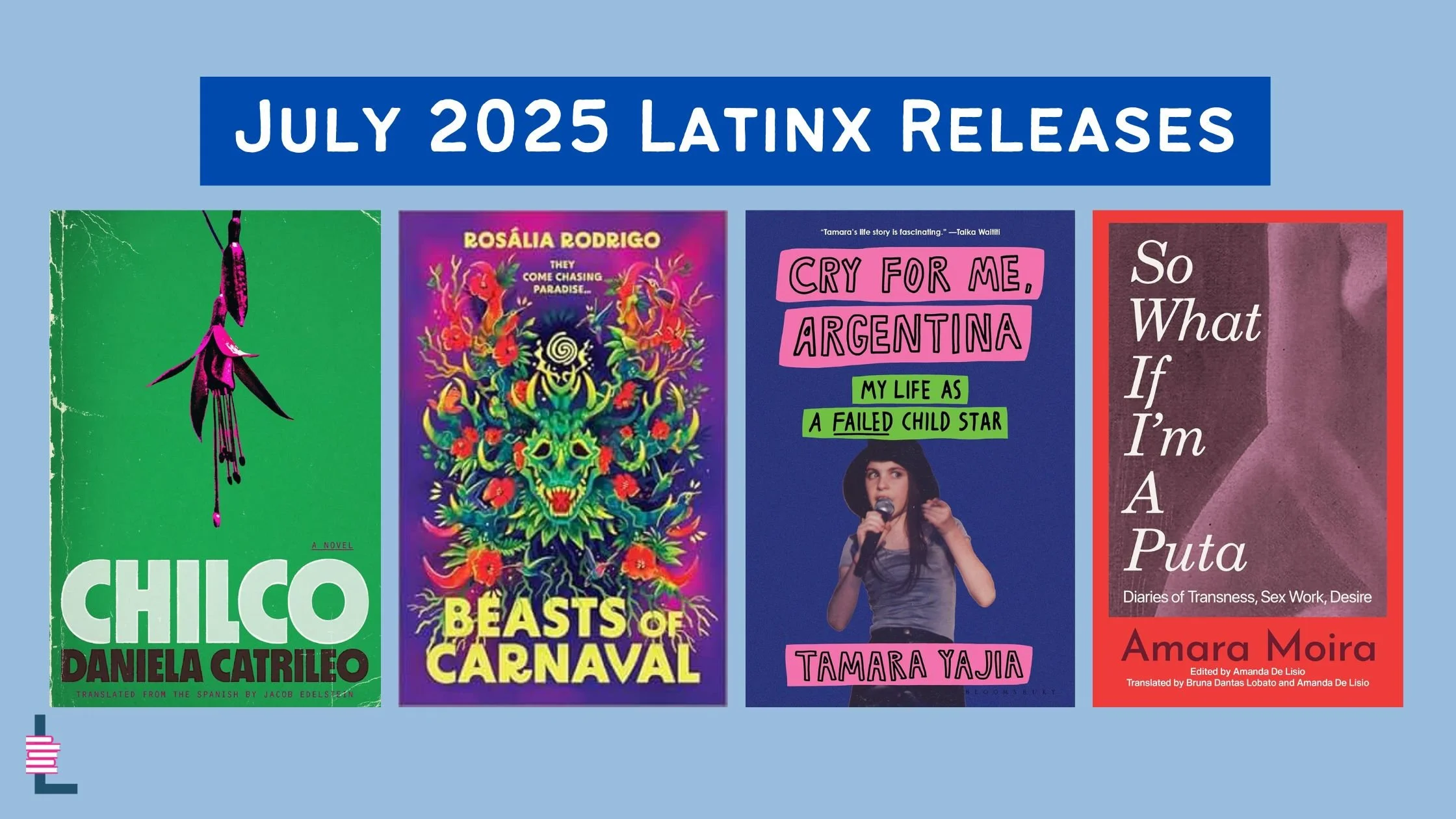ON SALE NOVEMBER 4
Prieta Is Dreaming by Gloria Anzaldúa | Edited by Kelli D Zaytoun & Analouise Keating | ADULT FICTION
Best known for Borderlands/La Frontera: The New Mestiza (1987), Gloria E. Anzaldúa was also a prolific fiction writer. Prieta Is Dreaming, a speculative novel-in-stories, follows the precocious Prieta from her childhood in South Texas to college and beyond as she tries to find her way in the world. Imbued with supernatural powers, Prieta traverses time, changes form, explores her desires, and defies convention. Started in the 1970s and revised up until Anzaldúa's death in 2004, Prieta Is Dreaming comes as a revelation, affirming Anzaldúa's place at the forefront of contemporary feminist, queer, and border theory, while transforming what we think about both her writing and ourselves. In these nineteen intertwined stories, we find some of Anzaldúa's most adventurous, inspired ideas about gender, sexuality, and the very nature of existence-as well as a character, la Prieta, as bold and memorable as the book itself.
My Daddy Speaks English, Mamá habla español by Mariane Rodriguez Dolce |Illustrated by Joe Cepeda | PICTURE BOOK
Early en la mañana,
Mamà drinks café.
Mi hermana drinks juice,
And Daddy drinks té.
Written with a combination of English and Spanish words that reflects the speech of a bilingual family, this story follows a child through her busy day--breakfast with Mommy, Daddy, and big sister; at the library with Grandma; buying groceries with Mommy; dinner time; bathtime; storytime; and bedtime. Every event is filled with love and joy. Then she dreams sweet dreams–in both English and Spanish, of course!
Deeper Than the Ocean by Mirta Ojito | ADULT FICTION
One hundred years after the shipwreck of the Valbanera, known to history as the "poor man's Titanic," Mara Denis gets an assignment to report on the Canary Islands, where her ancestors lived before they moved to Cuba. Unexpectedly, she discovers that the grandmother her mother cherished was listed among the dead of the Valbanera, years before Mara's mother was even born. This fateful twist changes everything Mara thought she knew about her family and herself, and sends her on a quest to find the truth. If her great grandmother is a ghost, who is she and where did she come from?
In spare, beautiful writing, the author transports the reader to the Canary Islands and Cuba in the early part of the twentieth century and New York and Key West in the present. This is an epic tale of a young woman's passion for her beloved, as well as the redeeming power of family secrets at last uncovered.
The Cracks We Bear by Catalina Infante | Translated by Michelle Mirabella | ADULT FICTION
Motherhood is terrifying, thinks Laura, feeling small and helpless as she holds her newborn daughter. Instead of joy, she feels fear, and then anger at her own late mother for her absence. The Cracks We Bear opens as a story about new motherhood. Soon, however, it reveals itself to be an exploration of memory and trauma as Laura starts to recall her childhood in Chile. Born in exile to staunchly communist parents, she returns to Chile with her mother after the collapse of the Pinochet dictatorship. In the fledgling democracy she grows up in, topics of capitalism and communism are ever present. Laura's reflections, born from personal experience, are interwoven with raw and honest memories of her family life. Borrowing elements from the Bildungsroman, and pulling from the Latin American short story tradition, Catalina Infante recounts Laura's past in vignettes. Piece by piece, the short chapters come together like a reconstructed vase, bearing its cracks.
Xolo by Donna Barba Higuera | Illustrated by Mariana Ruiz Johnson | CHILDREN’S
It is said the mighty feathered serpent god, Quetzalcoatl, helped create the earth. He is the hero who stole back the bones of humanity from the evil god of the Underworld. In his quest to bring humans to the earth, Quetzalcoatl's dog-headed twin brother, Xolotl, was present. Not much is known of Xolotl, the god of lightning, death, and misfortune. A monster.
This is what really happened.
From Newbery Medalist Donna Barba Higuera and illustrator Mariana Ruiz Johnson comes a singular reimagining of the Aztec myth of the origin of man--and man's best friend--that is nothing short of a modern masterpiece.
An Eye for an I: Growing Up with Blindness, Bigotry, and Family Mental Illness by James Francisco Bonilla | NONFICTION
"Jovencito, it's going to be lonely being different and yet strong in this world," James Francisco Bonilla's grandmother told him when he was ten. He had come home after defending himself against a bully who had threatened him with violence, making it clear that he didn't care that James was blind. But despite the isolation James felt in childhood, he would come to commit his life to leveraging his differences and strengths toward a collective fight for justice. James's memoir, An Eye for an I, is an inspiring account of how he found a path through his own suffering to make a difference for others.
Born with congenital cataracts, James had limited vision in his right eye and none in his left. At age nine, after a classmate hurled a horseshoe at his face in a racially motivated assault, James's right eye was injured and he became legally blind. At home, too, he feared physical violence, experiencing the unpredictable outbursts of a single mother suffering from severe mental illness. Throughout his youth as a Puerto Rican New Yorker, James was continually failed by educational systems that exposed him to one abuse after another. Searching for relief and inspiration, he discovered an unexpected solace in the natural world, spiritual encounters with Mother Earth that led him toward both personal healing and advocacy.
At nineteen, a breakthrough in medical technology restored the sight in his right eye, and James recognized his unique perspective on the struggles of the disabled and marginalized in American life--and his intense will to make a difference. He seeks to understand generational trauma, and in documenting his growth--physically, mentally, and spiritually--his memoir exemplifies the introspection necessary to participate in truly equitable and effective movement building. An Eye for an I presents both James and his aggressors with refreshing nuance and humility, inviting readers to empathize, be inspired, and consider their own potential to be of service in a broken, yet beautiful, world.
The Year of the Wind by Karina Pacheco Medrano | ADULT FICTION
Nina, a Peruvian writer in Spain on the eve of the pandemic, is pulled back into her nation’s fraught history after a fleeting encounter with a woman who is a doppelgänger of Bárbara, a cousin lost to time. The games, the candor, and the secrets of her youth come alive again, but these memories are tinged with disquiet, and what unfolds takes Nina back to a village nestled in the Andes where she must confront the terrors that stalked Peru in the early 1980s. As she travels from Cusco to Apurimac to uncover Bárbara’s fate, Nina begins to weave a new cloth of memory. She learns more about Bárbara’s political radicalization and involvement with the Shining Path, the Maoist terrorist group that instigated a bloody period of political violence in which tens of thousands of mostly indigenous Peruvians disappeared or were killed.
False War by Carlos Manuel Álvarez | Translated by Natasha Wimmer | ADULT FICTION
In this multivoiced novel, employing a dazzling range of narrative styles from noir to autofiction, Carlos Manuel Álvarez brings together the stories of many people from all walks of life through a series of interconnected daisy chains. From Havana to Mexico City to Miami, from New York to Paris to Berlin, whether toiling in a barber shop, roaring in Yankee Stadium, lost in the Louvre, intensely competing in a chess hall in Cuba, plotting a theft, or on a junket for émigré dissidents in Berlin, these characters learn that while they may seem to be on the move, in reality they are paralyzed, immersed in a fake war waged with little real passion.
The fractured narrative, filled with extraordinary portraits of ordinary people, reflects the disintegration that comes from being uprooted. At the same time it is full of tenderness, moments of joy and profound release. False War confirms Carlos Manuel Álvarez as one of the indispensable voices of his generation in Latin American letters.
ON SALE NOVEMBER 11
My Excellency: Comedy in Three Acts by Luis Rechani Agrait | Translated by William Carlos Williams | Edited by Jonathan Cohen | ADULT FICTION
William Carlos Williams's passion for his matrilineal Puerto Rican roots led him to visit Puerto Rico for the first time in 1941. There at a writers' conference, he befriended the playwright Luis Rechani Agrait, who gave him his play Mi señoría, staged to acclaim the previous year.
My Excellency, as Williams calls the play in his translation, is a political farce set in an "imaginary country" that resembles Puerto Rico during the Great Depression, with its high unemployment and labor unrest. The play focuses on the plight of an idealistic but naive man, Buenaventura Padilla, in a completely corrupt political system. Through an unscrupulous election, he becomes the nation's leader.
The play is successful as a satire largely because of Buenaventura's hilarious language--recreated by Williams--with its pompous style combined with stunning malapropisms and clownish errors in history and grammar. The play's very title is a laughable malapropism. My Excellency shows the corrupting power of success and the tragic flaw of materialism. Driving the comedy in Williams's translation is his firm command of the play's dialogue interwoven with popular idioms in which the charm of pure nonsense abounds.
Growing Papaya Trees: Nurturing Indigenous Roots During Climate Displacement by Jessica Hernandez Ph.D. | NONFICTION
Dr. Jessica Hernandez offers readers an Indigenous, Global-South lens on the climate crisis, delivering a compelling and urgent exploration of its causes—and its costs. She shares how the impacts of colonial climate catastrophe—from warming oceans to forced displacement of settler ontologies—can only be addressed at the root if we reorient toward Indigenous science and follow the lead of Indigenous peoples and communities.
Growing Papaya Trees explores:
Energy as a sociopolitical issue
The interconnectedness of natural disasters, sociopolitical turmoil, and forced migration
Our oceans, our forests, and our Indigenous futures
Moving Indigenous science from mere acknowledgement into real action
How to nourish Indigenous roots when displaced beyond borders
Carnaval Fever by Yuliana Ortiz Ruano | Translated by Madeleine Arenivar | ADULT FICTION
Ainhoa lives a protected life within the walls of her grandmother’s house in the neighborhood of Esmeraldas in Ecuador. Surrounded by a gaggle of aunts who love and teach her, Ainhoa narrates moments that evoke the powerful presence of music and dance in her daily life while also confronting familial violence over the course of Carnaval season. Seen through Ainhoa’s innocent eyes, the difficult themes that have defined the South American country’s recent history, including economic hardship, migration, and upheaval, are but one side of an enormous cultural richness steeped in the joy, music, and vibrancy of this singular community of women.
Following the contours of Carnaval, and sublimely translated by Madeleine Arenivar, Yuliana Ortiz Ruano’s sensorial and viscerally alive novel brims with poetry and exuberance, as well as the pain of an existence lived in the forgotten corners of the world.
The Queen of Swords by Jazmina Barrera | Translated by Christina Macsweeney | NONFICTION
Sifting through the writer's archives at Princeton, Barrera is repeatedly thwarted in her attempt to fully know her subject. Traditional means of research--the correspondence, photos, and books--serve only to complicate and cloud the woman and her work.Who was Elena Garro, really?
She was a writer, a founder of "magical realism," a dancer. A devotee to the tarot and theI Ching. A socialite and activist on behalf of indigenous Mexicans. She was a mother and a lover who repeatedly shook off (and cheated on) her manipulative husband, Nobel-laureate Octavio Paz. And above all, she wrote with simmering anger and glittering imagination.
The Queen of Swords is a portrait of a woman that also serves as an alternative history of Mexico City; a cry-out for justice; and an homage to the unknowable. It transcends mere biography, supplanting something tidy and authoritative for a sprawling experiment in understanding.
The White Hot by Quiara Alegría Hudes | ADULT FICTION
April is a young mother raising her daughter in an intergenerational house of unspoken secrets and loud arguments. Her only refuge is to hide away in a locked bathroom, her ears plugged into an ambient soundscape, and a mantra on her lips: dead inside. That is, until one day, as she finds herself spiraling toward the volcanic rage she calls the white hot, a voice inside her tells her to just . . . walk away. She wanders to a bus station and asks for a ticket to the furthest destination; she tells the clerk to make it one-way. That ticket takes her from her Philly home to the threshold of a wilderness and the beginning of a nameless quest—an accidental journey that shakes her awake, almost kills her, and brings her to the brink of an impossible choice.
The Week of Colors by Elena Garro| Translated by Megan McDowell | ADULT FICTION
A woman flits between two realities centuries apart, as scenes from the violent conquest of Mexico bleed their way into her comfortable contemporary life. Two little girls visit the home of a sorcerer who tortures women named after the days of the week. Girls become dogs, a laborer hides human bones in bricks he'll use to build a new development, and an old woman appears at an acquaintance's door one night with a knife and a bone-chilling confession.
With The Week of Colors, Elena Garro laid the groundwork for the literary movements that would shape the landscape of Latin American fiction and beyond. Here you'll find the early roots of magical realism, feminist horror, and anticolonial speculative fiction. In The Week of Colors, Garro highlights the violence in our history, our homes, and our hearts, in vivid color.
Pandora by Ana Paula Pacheco | Translated by Julia Sanches | ADULT FICTION
Ana, a literature professor, plans her remote classes while confined to her apartment during lockdown. Her lover, Alice, has died of Covid. In her place are a series of animals that demand Ana's care and attention: an overbearing pangolin, a swarm of insects, a giant bat.
Amid changes in medication and fraught faculty meetings, Ana's grip on reality loosens. She begins to devise a syllabus on the financialization of art and life, posing questions about labor and intimacy she will use her own body to answer. Her apartment fills with creatures, her teaching slides into absurd allegory, and her sense of what is real, permissible, or politically legible fractures.
Rescued Me by Nestor “The Boss” Gomez | NONFICTION
Nestor Gomez was sure he had found love with his new girlfriend. The only problem? His girlfriend was still in love with a real dog. No, really-a seventy-pound pitbull mix.
And after having been...well, nearly emasculated by a dog that bit him high on the thigh when he was a young boy, Nestor had developed a paralyzing phobia of our four-legged friends. Soon he was faced with a dilemma...could he learn to love the creatures that had aroused in him such terror, or would he lose the love of his life on account of her pet? (To say nothing of all the other little challenges that loom large in life--a hand-me-down-mattress with poky springs, nosy neighbors with belligerent blogs, pesky police, and an evil cat.)
How We Play the Game by Alexis Nedd | YOUNG ADULT
Zora Lyon plays to dominate. And as a no-nonsense, strategic prodigy of Wizzard Game's viral battle royale, she has all the skills she needs. So when Wizzard offers their top players a chance to participate in a summer academy designed to crown a national champion, Zora knows she has what it takes to be the last player standing.
But Wizzard isn't just looking for winners-they're looking to create viral gaming superstars. Suddenly, Zora finds herself competing against famous esports influencers who can play the game and boost their follower count. That includes Ivan Hunt, the insufferably good-looking fan-favorite streamer, whom she betrayed to cement her spot at the academy.
As their matches broadcast to Wizzard's fanbase, Zora's ruthless playing style and obvious lack of streaming experience immediately sends her to the bottom of the class. With her dreams of impressing Wizzard's cofounder Brian Juno in jeopardy, Zora will do just about anything to fix her image-even if that means pretending to date Ivan to gain some popularity points. What can go wrong with a little white lie?
ON SALE NOVEMBER 18
Look Up by Azul López | Translated by Shook | CHILDREN’S
Many, many years ago, a man was immensely curious about the sky, his curiosity as big as the sky itself. He would spend all day looking up, his eyes reflecting clouds or stars. But as time went on, his gaze was brought to earth, and he joined his neighbors in looking down, putting one foot in front of the other--until the passing days became a mysterious labyrinth that opened before him, leading him somewhere secret.
With the power of a myth and the finesse of a watercolor, Look Up opens up the worlds within worlds that only careful attention can reveal. Award-winning author and artist Azul López welcomes us into subtle and immersive acrylic paintings in a tale of wonder lost and found, and of the courage required to turn one's gaze in another direction.
States of Defeat: Us Imaginaries of Revolutionary Central America by Eric A Vázquez | NONFCITION
The thwarted Central American revolutions during the latter half of the twentieth century marked a watershed in what had become a global anti-imperialist movement striving for a more egalitarian future. Examining a range of documentary, literary, and artistic works, States of Defeat looks at how left-wing intellectuals in the United States reckoned with the fallout from these defeats through wide-ranging creative expressions of indignation, cynicism, and grief.
As he argues for the historical significance of Central America in the transition out of the Cold War, Eric A. Vázquez shows how the unfulfilled revolutionary ambitions in Nicaragua, El Salvador, and Guatemala prompted intellectuals in the United States to reexamine their desires for radical transformation. Analyzing novels, memoirs, anthropological writings, documentary film, and archival materials from the 1980s and 1990s, he demonstrates how these texts prefigured later anxieties about secrecy and securitization, the rise of nongovernmental organizational forms, and state failure.
Examining the legacies of unfulfilled anti-imperialist political ideals and their implications for the global left in the twenty-first century, States of Defeat offers a renewed perspective on the function of Central America in the US imagination.
Byzantine Bembé: New York by Manny Vega / Nueva York Por Manny Vega | Edited by Angel ‘Monxo’ López | NONFICTION
Manny Vega's art can be found in the form of mosaics and murals adorning street walls, subway stations, cultural centres, and business facades throughout New York's East Harlem. This lushly illustrated volume covers the full range of Vega's artistic output, from carefully crafted mosaics, including female figures and stylized album covers, to prints and works on paper. This bi-lingual Spanish/English study also incorporates essays that explore Vega's relationship with New York, murals as a medium, and the links between his work and music. Throughout the volume, Vega's focus on the Puerto- Rican experience in New York shines through and highlights the influence of the city's cultural mix on his unique art.
The Sky of Sacrifice by Rosalia Aguilar Solace | ADULT FICTION
As the Great Library of Tomorrow prepares for a momentous celebration, Nu embraces both newfound love and her role as the Sage of Truth. However, if fresh nightmares prove to be the harbingers of Suttaru's malevolent forces, romance must take a back seat to her responsibilities.
When a savage act sends shock waves through the Great Library, the return of an old friend brings to light a hidden relic from the Book of Wisdom's past.
To stop the enemy, the Sages must pursue multiple paths. For Nu and Robin, this means traveling the realms in search of a mysterious figure from long ago. Meanwhile, Veer and his companions brave a realm of darkness and despair, where even the strongest can become undone ...
ON SALE NOVEMBER 25
My Fair Señor by Alana Quintana Albertson | ADULT FICTION
San Diego-based model and influencer Jaime Montez isn’t the heir—or even the spare—to his family’s Taco King fast-food empire. So after he’s asked to be the face of yet another non-Hispanic, celebrity-owned tequila company, Jaime decides to reinvent his role in the family dynasty: he’s going to start his own liquor brand. The problem? He’s an agave amateur. He needs help if he expects to ever master mezcal. And he has the perfect teacher in mind. . . .
Alma Garcia is the toast of Tiburon. Having passed the grueling examen de Consejo Regulador del Tequila in Mexico, Alma used her extensive knowledge as a certified catadora to open the hottest mezcal bar in Marin County. When her college flame returns with a tempting proposition—he’ll promote her business in the local Cinco de Mayo Street Festival if she’ll bring him into the world of tequila—it’s as if the holiday spirits are bringing Jaime and Alma back together.
She has plenty to teach him about tequila—from harvesting the agave to taking a proper sip, and even introduces him to farmers who grow and bottle their own local mezcals. Their chemistry is intoxicating, but Jaime’s ulterior motives for reconnecting bring the threat of another serious love hangover, leaving them both to wonder if this second chance at romance is worth the shot. . . .
Frankenstein: The Complete Screenplay by Guillermo del Toro | ADULT FICTION
Frankenstein, directed by Guillermo del Toro, delves deep into the timeless tragedy of Victor Frankenstein—from his grisly experiments and the destruction wrought in their wake to his quest for redemption in the frigid Arctic—in this unforgettable reimagining of one of the most iconic literary works of all time.
Featuring stunning concept art, film stills, and behind-the-scenes photography, this official reproduction of the film’s complete screenplay invites readers into del Toro’s world as the classic story was adapted for the screen. With nuanced character development and poignant dialogue, the script brings fresh life to Shelley’s tale, exploring like never before the fractured relationship between creator and creation. From the tormented Victor Frankenstein to his tragic monster, del Toro’s unique artistic voice shines through every page, offering an immersive experience for fans of both the original novel and del Toro’s cinematic genius.


